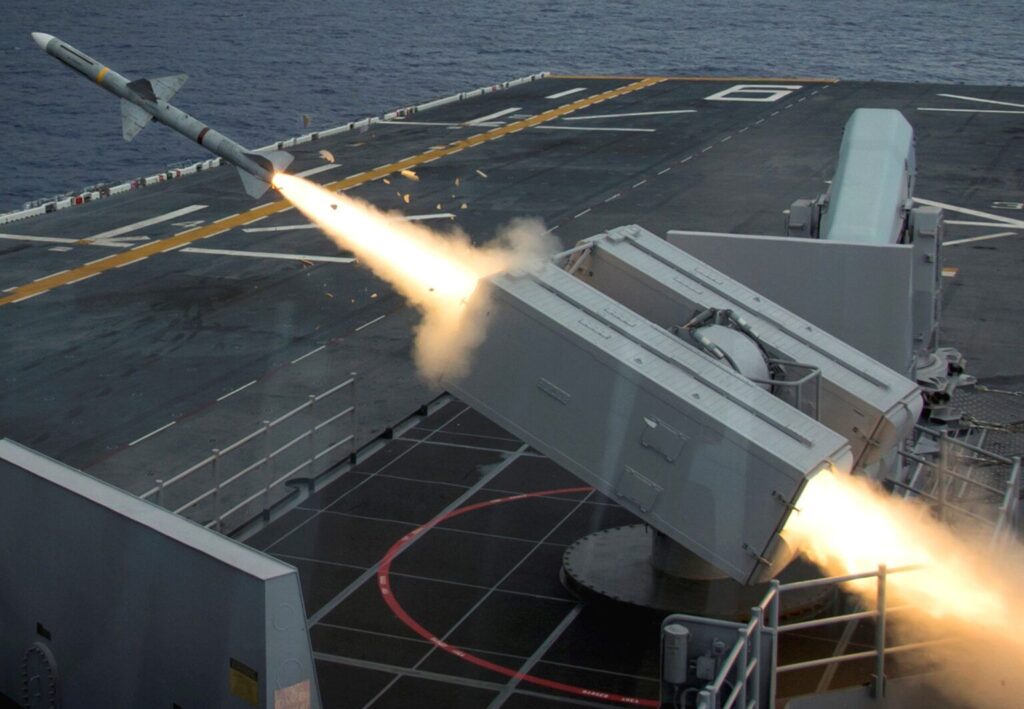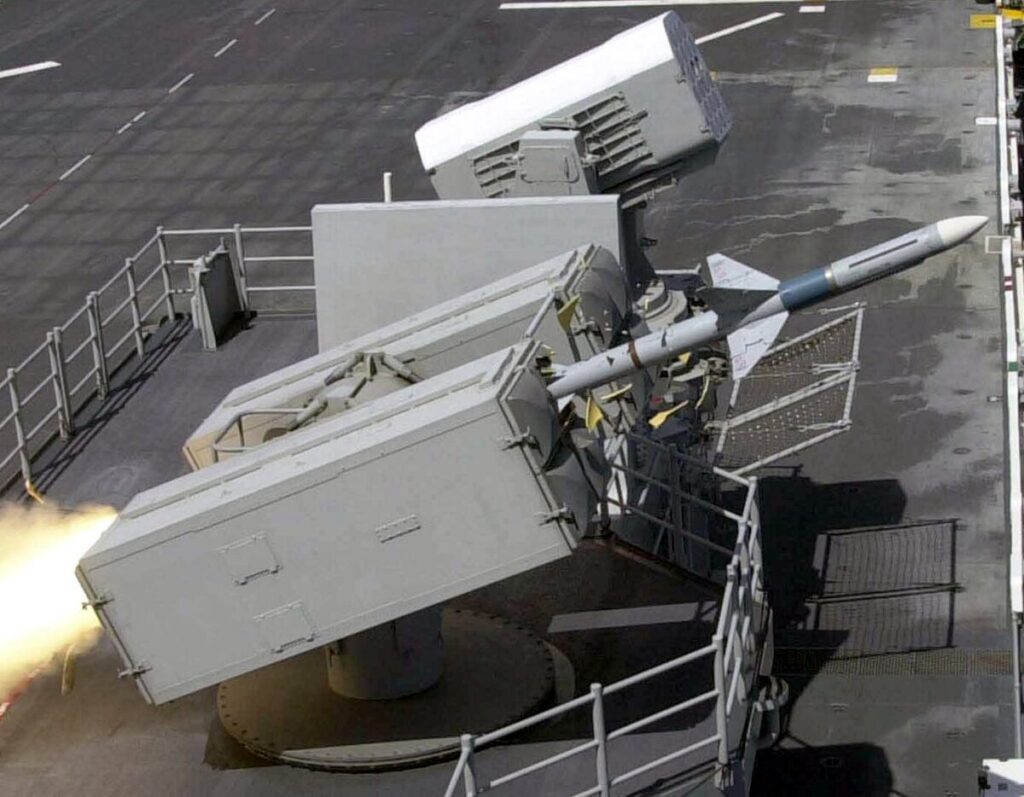Overview of the American guided missile RIM-7 Sea Sparrow
- January 19, 2023
- 0
The RIM-7 Sea Sparrow is an American “aircraft” class guided missile with a semi-active radar homing head. It was developed in the early 1960s on the basis of
The RIM-7 Sea Sparrow is an American “aircraft” class guided missile with a semi-active radar homing head. It was developed in the early 1960s on the basis of

The RIM-7 Sea Sparrow is an American “aircraft” class guided missile with a semi-active radar homing head. It was developed in the early 1960s on the basis of the AIM-7 Sparrow air-to-air missile, adopted in 1976. It is a short-range anti-aircraft missile used to provide anti-missile defense of ships.
In the 1960s, the US Navy took up the issue of providing short-range air defense for small-displacement ships. Existing anti-aircraft missile systems, such as the RIM-24 Tartar with beam launchers, were too large to be installed on ships smaller than destroyers and also lacked sufficient missile maneuverability to engage missiles flying close to the ship.

The Navy adapted the AIM-7 Sparrow for naval use. This missile with a semi-active radar homing had a range of up to 32 km and could attack oncoming aircraft on an oncoming course.
The adaptation of the missile, which is the basic point defense missile system (BPDMS), was carried out very quickly. The launcher, created on the basis of the RUR-5 ASROC container launcher, contained 8 missiles. Their guidance was carried out with the help of manually-controlled Mark 115 radars, the principle of guidance was simple: the operator, receiving voice instructions from the general detection radar task, guided the Mark-115 radar installation to a visually tracked target and “lighted” for semi-active GOS missiles. The launcher automatically repeated the movements of the radar and then turned towards the enemy.
The first version of the Sea Sparrow was far from a perfect weapon. The rocket’s engine, designed to be launched from an aircraft, had a long burn time, but had little thrust initially due to the rocket’s very slow acceleration. Its range was limited to only 10 kilometers.

As a result, the dimensions of the missile launcher turned out to be larger than calculated, which did not allow installing the system on a ship with a displacement of less than a frigate. And in itself, targeting a missile with the help of a hand-controlled radar was an imperfect and unreliable solution. The need for the radar operator to visually see the target limited the use of the complex, rendering it useless in conditions of poor visibility. Only the following changes made it possible to improve the indicators of the complex.
Changes:

Tactical and technical features:
aiming range:
lesion height:
Source: Port Altele
I’m Maurice Knox, a professional news writer with a focus on science. I work for Div Bracket. My articles cover everything from the latest scientific breakthroughs to advances in technology and medicine. I have a passion for understanding the world around us and helping people stay informed about important developments in science and beyond.